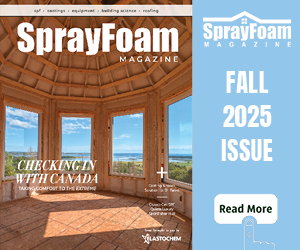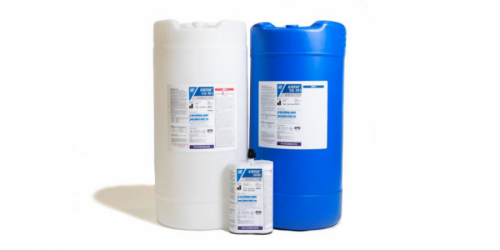Spray Foam: Closed-Cell vs. Open-Cell

Back to Education Center | Homeowners' Guide
Open-Cell and Closed-Cell Foams: What’s the Difference?
The importance of distinguishing between the two types of spray polyurethane foam cannot be understated. When it comes time to insulate a home or commercial building, you must opt for open-cell foam or closed-cell foam, or a specific combination thereof. Each type of foam distinctly impacts project costs, application methods, and building performance. There are two major factors distinguishing closed-cell and open-cell foams: structure and density.
Cell Structure
The structure of open-cell foam consists of tiny bubbles or cells that aren’t fully encapsulated–they are broken, torn, ripped, etc. Because they’re broken, air fills the open space inside the bubble, which results in a soft, spongy material.
Closed-cell foam differs in that every bubble or cell that makes up the foam is completely encapsulated and packed tightly together. The bubbles aren’t filled with air, but rather a gas that aids foam expansion and insulation properties. This results in an altogether harder, stronger material than open-cell foam.
The blowing agent, which aids in forming the bubbles or cells that make up SPF’s foam structure, is usually water for open-cell and high-R-value chemicals for closed-cell.
Material Density
Closed-cell foam is roughly four times as dense as open-cell for insulation applications. To ascertain foam density, one cubic foot (cu. ft.) of foam material is weighed. Open-cell tends to be roughly 0.5 lb./cu. ft. in density, whereas closed-cell ranges from 1.7 to 3.0 lb./cu. ft. in density, or even higher for certain applications. (Note: these density figures are rough averages. Every SPF product will vary based on its formulation.)
Properties
Of the two types of SPF, closed-cell foam is stronger, is a better insulator, and is more resistant to the transmission of air and water vapor. Because closed-cell foam is denser, however, it requires more chemical material per unit volume than open-cell, and is therefore more expensive to install–even if comparing the cost-per-R-value. Open-cell foam, while offering fewer overall benefits, is a superb sound-deadening material and is still a superior insulating material compared to fiberglass and cellulose.
Insulation Value
R-value is a way to denote a material’s insulating properties, and the higher the number per unit thickness, the better the insulation value. Closed-cell spray foam has an R-value of about 6.0 per inch (R-6), while open-cell SPF comes in at roughly R-3.5. (Note: these R-values are rough averages. Every SPF product will vary based on its formulation.)
Usage
The deciding factor in opting for either open-cell or closed-cell foam is frequently based on application-specific performance characteristics like the structural integrity, control of water vapor, and the amount of available space to install the foam. For example, closed-cell foam is really the only option for residential roofing adhesive, due to its strength characteristics.
In addition to the situation-specific considerations, there are more general considerations to make when deciding between open-cell and closed-cell foam. For instance, open-cell is typically inappropriate for below-grade applications or any applications where it could come in direct contact with water, while closed-cell foam isn’t advisable for sound-deadening applications, as open-cell foam is superior and less expensive.
Of course, it’s a good idea to discuss the type of foam for your project with your SPF installation professional prior to the job beginning. Also, it’s always prudent to contact a supplier for complete performance specifications and application information for their line of materials.





























